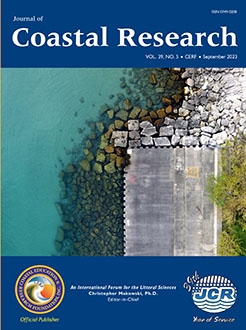Liang, Z.; Ji, D.; Zhang, X.; Lingyun, W.; Zhang, T.; Li, S.; Yong, J.; Luo, J.; Liu, Y., and Zeng, J., 2023. Carboniferous oceanic basin sediment-gravity flows in the margin of the Junggar Basin, NW China: Characterisation and implications for hydrocarbon potential and evolution pacing. Journal of Coastal Research, 39(5), 890–906. Charlotte (North Carolina), ISSN 0749-0208.
Several Carboniferous deep-marine-sandstone reservoirs have recently been discovered in the Junggar Basin, NW China. These reservoir sandstones were deposited by sediment-gravity flows that occurred on the continental slope of the Junggar Basin, and they have high hydrocarbon exploration potential. In this study, careful observations and petrological and geochemical analyses of samples from outcrop sections of Carboniferous rocks from the Junggar Basin were conducted to establish the deep-marine sedimentary characteristics, depositional environments, and mechanism of these gravity-flow deposits, as well as a sedimentary model for their occurrence. The deep-marine, gravity-flow deposit types include those of turbidity currents, debris flows, and slumps. The debris-flow deposits can be divided into pebbly debris-flow deposits and sandy debris-flow deposits. Results allow the relationship between the type and nature of gravity flows and ocean basin evolution to be established. During the early Carboniferous, the ocean basin had sufficient space to accommodate incoming sediment, and the sediment transport distance was long. The gravity-flow sediments of this period are dominated by sandy debris-flow deposits and turbidity-flow deposits characterised by thin individual layers but thick accumulations of multiple deposits. With continuous narrowing of the oceanic basin during the late Carboniferous, the basin had a smaller accommodation space. The main types of gravity-flow deposition during this period were pebbly and sandy debris flows, with rare thin turbidity-flow deposits. These deposits were coarser grained than their early Carboniferous equivalents, and their cumulative thicknesses were smaller. The results of the study provide insights into the prediction of deep-marine reservoir sandstones and the distribution of hydrocarbons in the Junggar Basin.





